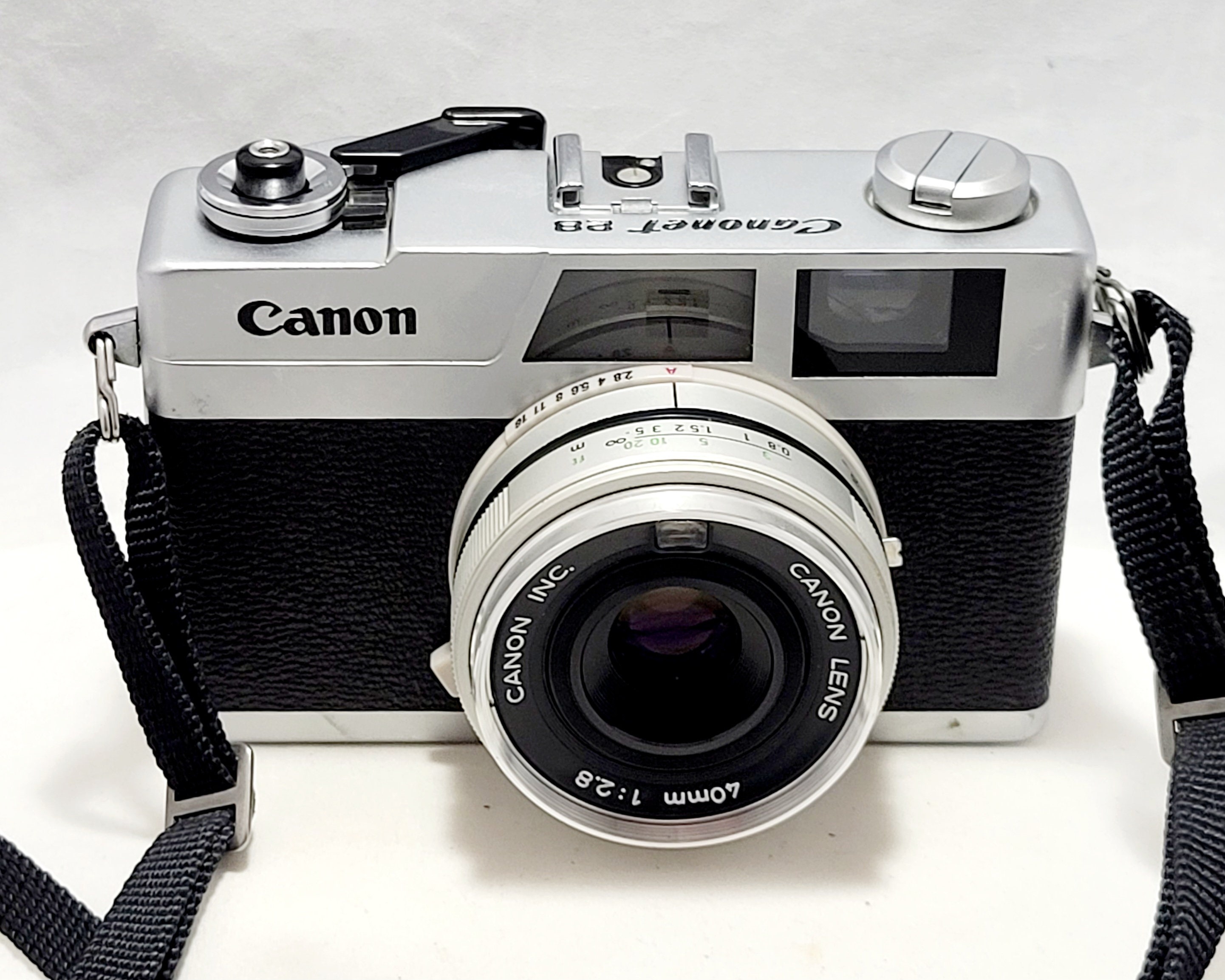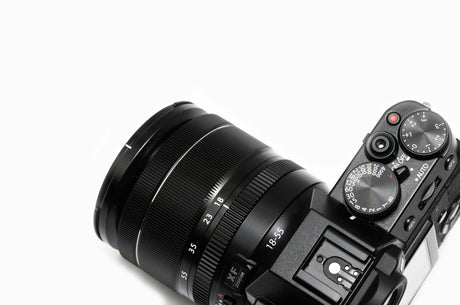 Are you intrigued by the world of analog photography? Have you ever wondered how to use a Canon 28 35mm analog camera? Look no further! In this comprehensive guide, I'll take you through the entire step-by-step process to master this classic camera. From understanding its functions to loading film, we'll cover everything you need to know to capture stunning images with the Canon 28. So grab your camera and dive into the fascinating world of analog 35mm photography.
Are you intrigued by the world of analog photography? Have you ever wondered how to use a Canon 28 35mm analog camera? Look no further! In this comprehensive guide, I'll take you through the entire step-by-step process to master this classic camera. From understanding its functions to loading film, we'll cover everything you need to know to capture stunning images with the Canon 28. So grab your camera and dive into the fascinating world of analog 35mm photography.
General view of the Canonet 28

The Canon 28 is an iconic camera that offers a host of features for photography enthusiasts. With its convenient design and easy-to-use operations, this film camera is the perfect choice for those who want to explore the world of film photography. It is equipped with a 1:2.8 lens and a fixed focal length, allowing users to capture sharp and vivid images. It also offers speeds ranging from 25 to 400 ASA, providing flexibility in different lighting conditions. Whether you are a novice or an experienced photographer, the Canon 28 is a reliable and versatile camera that can help you create spectacular film photos.
When it comes to the Canon 28, it's important to be aware of its capabilities and limitations. This camera is known for its ease of use and simple operation, making it ideal for those new to film photography. With its manual focus and aperture settings, photographers have complete control over their shots and can experiment with different techniques to achieve the desired results. Additionally, the Canon 28 features a built-in light meter that helps determine the correct exposure settings for each shot. In conclusion, the Canon 28 is a reliable and straightforward camera that can deliver outstanding results in film photography.
Checking the camera status
Before investing in a Canon 28, it's essential to inspect the camera's condition. Carefully assess the camera body for signs of wear, such as scratches, dents, or other physical defects. Then, test the levers, buttons, and knobs to ensure they're in good working order. Turn the dials and press the levers to confirm they move smoothly. Finally, examine the lens for any marks or scratches that might affect the quality of your photographs. By thoroughly evaluating your Canon 28 before purchasing or using it, you can ensure the camera is in top condition and ready for use.
Examining the condition of your Canon 28 is an essential step before purchasing or using it. Start by inspecting the camera body for any visible damage or signs of wear. Inspect for scratches, dents, or other physical defects that may compromise its functionality. Next, verify that all levers, knobs, and buttons are present and working properly. Test by turning the dials and pressing the levers to confirm they move without resistance. Finally, examine the lens for any scratches or marks that may affect the quality of your images. By carefully checking the camera's condition, you can ensure that your Canon 28 is in good working order and ready for use.
Replace the battery
To ensure your Canon 28 works properly, it's essential to replace the battery when necessary. Locate the battery compartment, which can be found on the side of the lens or on the bottom. Unscrew this area using a small screwdriver, remove the old battery, and dispose of it responsibly. Insert a new battery, ensuring it's the correct type and orientation. Finally, close the compartment securely.
It's important to note that the type of battery required may vary depending on the Canon 28 model. Be sure to consult your camera manual or ask an expert for advice to ensure you choose the correct battery. Additionally, it's recommended to have spare batteries on hand, especially if you plan to use the camera for extended periods or for important events. By regularly inspecting and replacing the battery, you can enjoy smooth operation of your Canon 28 and capture precious memories with ease. By taking this step, you can also ensure your cookies and other technologies are always fresh and ready for use.
Loading the film reel
Ensuring successful operation begins with loading the Canon 28's film roll. Start by acquiring a fresh roll of 35mm film, as well as a dark bag or film changer. Open the back of the camera, usually located on the top, and insert the film cartridge securely into the camera. Pull the end of the film out of the cartridge and feed it into the take-up winder to engage it. Advance the film using the film advance lever until the first frame number appears in the film counter window. Close the back of the camera and secure it, and you're ready to start shooting!
It's essential to handle film carefully to keep your images intact. Avoid opening the back of the camera unless necessary, as exposure to light can permanently ruin the film. When advancing the film after each shot, do so gently to avoid any accidental breakage or jamming. Monitor the number of exposures to avoid rewinding the film prematurely. By following these steps and being vigilant with your film roll, you can ensure the Canon 28 produces stunning analogue photographs for you to enjoy.
Understanding camera functions
To capture stunning photographs with the Canon 28, it's important to understand the camera's various functions. From adjusting the aperture to controlling the shutter speed, each function plays an integral role in achieving the desired results. To gain a complete understanding of how each feature works and how it affects the final image, it's important to read the camera's manual or consult online resources. With a clear understanding of the camera's functions, photographers can unleash their creativity and capture memorable moments with precision and control.
Aperture is one of the most important camera functions to understand. This setting determines the amount of light entering the camera through the lens and controls the depth of field in your photograph. A wider aperture (smaller f-number) allows more light in, resulting in a shallow depth of field with a blurred background. Conversely, a smaller aperture (larger f-number) limits the amount of light, resulting in a greater depth of field with more elements in focus. Becoming familiar with manipulating aperture can help you create visually striking photos with your desired focus and a blurred background.
Shutter speed is an equally important camera function to understand. This feature determines how long the camera shutter remains open, exposing the film to light and capturing motion blur in the photograph. A faster shutter speed is ideal for freezing action in photographs, such as sporting events or wildlife, while a slower shutter speed allows for a longer exposure, resulting in motion blur that can be used creatively to capture the smooth flow of water or light trails. Understanding how to adjust shutter speed allows photographers to control the visual effect of motion in their images.
Additionally, it's essential to understand how to use the camera's metering modes for accurate exposure. Different metering modes, such as spot metering, center-weighted metering, and matrix metering, provide different ways to assess the brightness and darkness of the scene. By understanding and selecting the appropriate metering mode for a given shooting situation, photographers can ensure their images are well-exposed and properly balanced in terms of brightness and contrast. With a comprehensive understanding of the camera, photographers can take full advantage of the Canon 28's features and capture stunning images.
Additional resources
For those interested in deepening their mastery with the Canon 28, there are a number of useful resources available. Forums and communities dedicated to film photography are a great way to gain knowledge from other enthusiasts, ask questions, and share experiences. Websites like the Film Photography Project and Emulsive are packed with tutorials, information, and tips specific to film photography. Additionally, photography schools and community centers may offer classes and workshops focused on film photography, providing the opportunity to learn from experienced photographers, gain hands-on experience, and receive personalized advice on using the Canon 28.
Additionally, digital copies of camera manuals can be found on the manufacturer's website or on photography equipment websites. These guides provide detailed information on camera features and settings and can be an invaluable reference when trying to understand a particular camera function or feature. Additionally, photography books and magazines dedicated to film photography, such as those in the Name Collection, contain articles, tips, and techniques specific to the Canon 28.

Conclusion
In conclusion, the Canon 28 35mm film camera is a versatile and reliable tool for capturing stunning photographs. With an overview of the camera's features and functions, as well as tips on checking its status and replacing the battery, this article has provided a complete guide on how to use the Canon 28. Additionally, we've explored the process of loading film and understanding the camera's various functions. For more information and resources, be sure to check out the Additional Resources section. Whether you're a beginner or a seasoned photographer, the Canon 28 is a must-have for film camera enthusiasts. So grab your Canon 28, unleash your creativity, and start capturing timeless moments with this remarkable camera.

